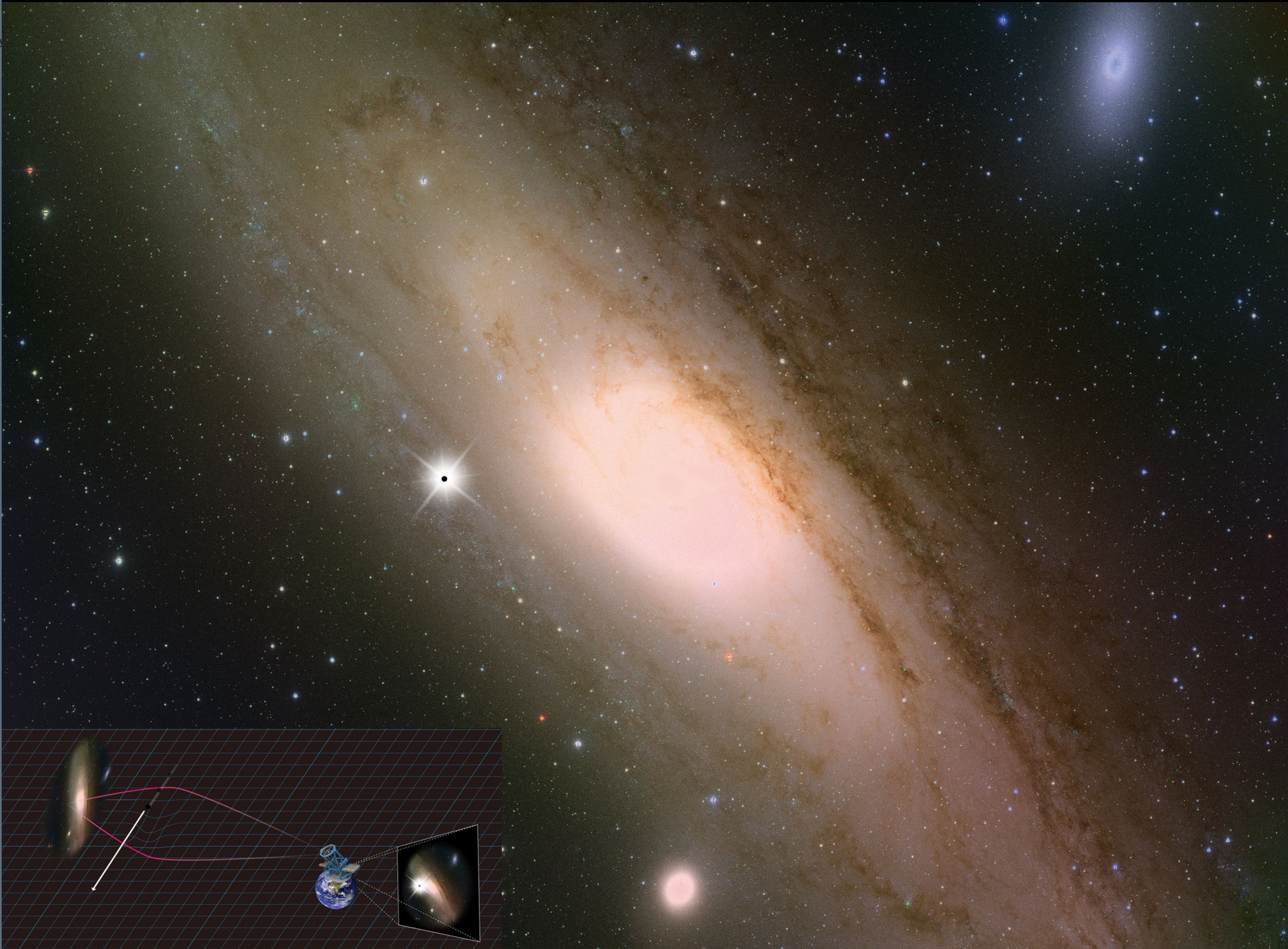Researchers with significant results challenging Prof. Stephen Hawking’s hypothesis
This finding is a part of a newly published research paper in the peer-reviewed journal Nature Astronomy which was released on April 1, 2019, where Dr Surhud More and Dr Anupreeta More from IUCAA where involved.

A researcher team from Japan, India and USA has arrived at significant results which question the predictions made by Prof. Stephen Hawking that black holes formed in early Universe could contribute significantly to dark matter in the Universe. This finding is a part of a newly published research paper in the peer-reviewed journal Nature Astronomy which was released on April 1, 2019, where Dr Surhud More and Dr Anupreeta More from IUCAA where involved.
Dark Matter is widely considered to consist of about 85% of the matter in the Universe. Earlier all the research attempts to detect dark matter particles directly via underground experiments, or accelerator experiments such as the Large Hadron Collider (LHC) by CERN have failed.
In 1971, Prof. Stephen Hawking lights up the possibility that black holes could form very early in the Universe. Since the actual nature of dark matter particles is a mystery, he predicted that these primordial black holes (made up of ordinary matter) could behave like dark matter.
The team used gravitational lensing to look for primordial black holes between us and our neighbour, the Andromeda galaxy.
Renowned scientist Albert Einstein was among one of the few scientists who predicted Gravitational lensing. This results in bending of light rays, coming from a distant star, due to the gravitation of a massive object in between such as an early universe black hole. In extreme cases, the light from the background star gets magnified, an effect which can be detected using powerful telescopes.
Considering how early universe black holes are expected to move in interstellar space, the research team recorded multiple images of Andromeda galaxy for a period of one night using the Hyper Suprime-Cam on the Japanese Subaru Telescope located in Hawaii. Researchers were hoping to find many instances of stars in Andromeda galaxy, gravitationally lensed by intervening early universe black holes. Gravitational lensing is very rare as it requires a distant star, black hole and the observer on earth to be well-aligned.
The use of Subaru telescope was essential to capture any rare events of gravitational lensing happening in the direction to Andromeda galaxy. Subaru telescope with a primary mirror of 8.2 meters, made it possible to image the entire disk of the Andromeda galaxy in one shot. From 190 consecutive images of Andromeda galaxy recorded from Subaru telescope, researchers expected to find 1000 events if all of dark matter was made up of primordial black holes. However, the team could identify at most one case of this kind. Thus, their results have now confirmed that primordial black holes with masses similar or less massive than the moon cannot contribute more than a per cent of all dark matter.
The significance of this research: Observations from this study rule out the possibility that primordial black holes with masses comparable to the moon and sizes of about 0.1 mm can make up most of the dark matter. This 'negative result' vis-a-vis the predictions of Prof. Hawking about early universe black holes have resulted in further advancement of our knowledge about the constituent elements of the Universe. This study imposes stringent constraints on the physics of the early Universe and thus disfavours Prof. Hawking's hypothesis.










